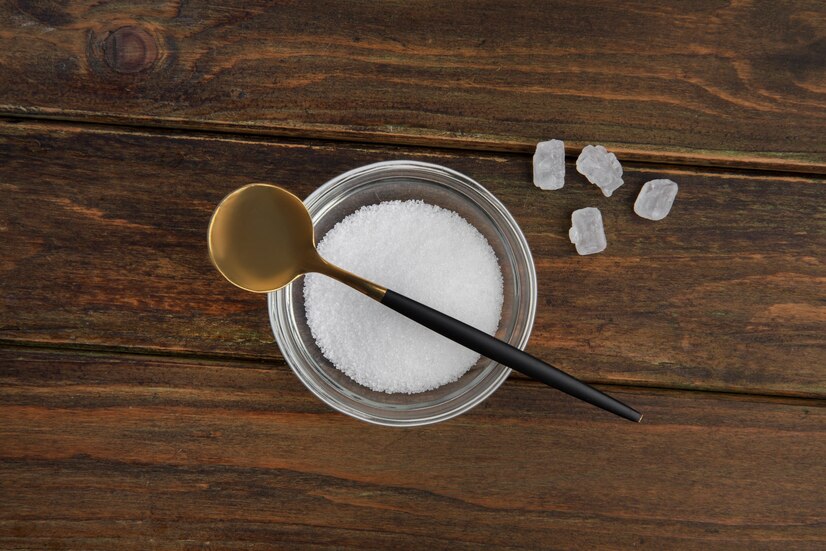In the world of culinary arts, flavor is king. Chefs and food manufacturers are constantly searching for ingredients that can elevate dishes and provide that extra dimension of taste that makes food truly memorable. One such ingredient that has gained popularity in recent years is disodium succinate food grade. This unique additive offers a distinctive taste profile and a host of applications that make it a valuable tool in kitchens and food production facilities worldwide.
Understanding Disodium Succinate: A Brief Overview
Disodium succinate is the disodium salt derived from succinic acid, which is naturally present in many living organisms. Succinic acid itself is a key component of the citric acid cycle, a fundamental metabolic pathway in all aerobic organisms. When succinic acid is combined with sodium ions, it forms disodium succinate, a white, crystalline powder with a characteristic umami taste.
The Chemistry Behind Disodium Succinate
Disodium succinate is represented chemically as C₄H₄Na₂O₄. It is highly soluble in water, making it easy to incorporate into various food products. The compound has a neutral pH, which ensures that it does not alter the acidity or alkalinity of the food it is added to.
Chemical Properties of Disodium Succinate:
- Molecular Formula: C₄H₄Na₂O₄
- Molecular Weight: 162.05 g/mol
- Solubility: Soluble in water
- Appearance: White crystalline powder
- pH Level: Neutral
Natural Occurrence
While disodium succinate can be synthetically produced, it is also found naturally in various fermented foods and certain seafood. This natural occurrence contributes to its ability to impart a seafood-like flavor when used as an additive.
The Role of Disodium Succinate in the Food Industry
Disodium succinate food grade plays a significant role in the food industry, thanks to its unique properties and versatility. Its primary function is as a flavor enhancer, but it also serves other purposes that make it a sought-after ingredient in food production.
Flavor Enhancement
One of the most notable characteristics of disodium succinate is its ability to enhance flavors. It is particularly known for its umami taste, which is often described as savory or meaty. Umami is one of the five basic tastes, alongside sweet, sour, bitter, and salty, and it plays a crucial role in creating a well-rounded flavor profile.
How Disodium Succinate Enhances Flavor:
- Umami Boost: Disodium succinate amplifies the umami taste in foods, making them more savory and satisfying.
- Synergy with Other Flavors: It works synergistically with other flavor enhancers like monosodium glutamate (MSG) to create a more complex and rich taste experience.
- Seafood Flavor: It imparts a subtle seafood flavor, making it ideal for seafood-based dishes and products.
Applications in Various Food Products
Disodium succinate is used in a wide range of food products, each benefiting from its unique taste-enhancing properties.
Common Applications of Disodium Succinate:
- Snacks: Chips, crackers, and other savory snacks use disodium succinate to boost flavor and create a more satisfying taste.
- Soups and Broths: It is commonly added to soups and broths to enhance the savory profile and mimic the taste of seafood.
- Processed Meats: Sausages, deli meats, and canned meats benefit from the umami boost provided by disodium succinate.
- Seasonings and Sauces: It is often included in seasoning blends and sauces to enrich flavor and improve palatability.
- Instant Noodles: Disodium succinate is used to enhance the taste of the broth and seasonings in instant noodles.
Improving Texture and Stability
Beyond flavor enhancement, disodium succinate also plays a role in improving the texture and stability of certain food products. It can act as a buffering agent, helping to maintain the desired consistency and prevent spoilage.
The Science of Umami: Why Disodium Succinate is a Game-Changer
To truly appreciate the value of disodium succinate food grade, it’s essential to understand the concept of umami and its impact on taste perception.
What is Umami?
Umami, which means “pleasant savory taste” in Japanese, was identified as a basic taste over a century ago. It is primarily associated with amino acids such as glutamate and nucleotides like inosinate and guanylate, which are naturally present in many foods.
Characteristics of Umami:
- Savory and Meaty: Umami provides a depth of flavor often described as savory or meaty, making dishes more satisfying.
- Mouthfeel: It enhances the overall mouthfeel, creating a sensation of richness and fullness.
- Flavor Balance: Umami balances other flavors, harmonizing sweet, sour, salty, and bitter tastes.
The Role of Disodium Succinate in Umami Perception
Disodium succinate is a potent umami enhancer, capable of elevating the savory profile of foods. It interacts with taste receptors on the tongue, enhancing the perception of umami and creating a more robust flavor experience.
How Disodium Succinate Enhances Umami:
- Receptor Activation: Disodium succinate activates umami taste receptors, heightening the savory taste.
- Flavor Synergy: It works in conjunction with other umami compounds, such as glutamate, to enhance overall flavor perception.
- Lingering Taste: The umami effect lingers on the palate, leaving a pleasant aftertaste that encourages further consumption.
Health and Safety Considerations
When it comes to food additives, safety and health considerations are paramount. Disodium succinate food grade is recognized as safe for consumption when used appropriately, but there are still some factors to consider.
Safety Profile
Disodium succinate has been evaluated for safety by various food safety authorities, and it is generally regarded as safe (GRAS) for use in food products.
Safety Assessments:
- FDA: The U.S. Food and Drug Administration has approved disodium succinate as a safe food additive.
- EFSA: The European Food Safety Authority also considers it safe for consumption within specified limits.
- JECFA: The Joint FAO/WHO Expert Committee on Food Additives has evaluated its safety and established acceptable daily intake levels.
Nutritional Considerations
While disodium succinate enhances flavor, it does not contribute significantly to the nutritional profile of foods. It is primarily used in small quantities and does not provide substantial amounts of macronutrients or micronutrients.
Nutritional Impact:
- Caloric Content: Disodium succinate is low in calories and does not significantly impact the caloric content of foods.
- Sodium Content: As a sodium-containing compound, it can contribute to the overall sodium content of a product. However, it is typically used in small amounts that do not pose significant sodium-related health risks.
Potential Allergies and Sensitivities
Disodium succinate is generally well-tolerated, but individuals with specific allergies or sensitivities may need to exercise caution.
Considerations for Allergies:
- Sodium Sensitivity: Individuals with sodium sensitivities should be mindful of the total sodium intake, including that from disodium succinate.
- Allergic Reactions: Although rare, allergic reactions to disodium succinate can occur. It is essential for consumers with known allergies to check product labels carefully.
Disodium Succinate in the Global Food Market
Trends and Demand
The demand for disodium succinate has been steadily increasing, driven by its versatility and flavor-enhancing properties. As consumers seek more complex and satisfying taste experiences, food manufacturers are turning to disodium succinate to meet these demands.
Market Trends:
- Clean Label Products: Disodium succinate is often used in clean label products that aim to enhance flavor naturally without artificial additives.
- Plant-Based Foods: The rise of plant-based diets has increased the demand for umami-rich ingredients like disodium succinate to mimic the savory flavors typically associated with meat.
Regional Applications
Different regions have varying preferences and applications for disodium succinate, influenced by culinary traditions and local taste preferences.
Regional Usage:
- Asia: In Asia, disodium succinate is commonly used in instant noodles, sauces, and snack foods to provide a savory boost.
- Europe: European food manufacturers incorporate disodium succinate into ready meals and processed meats to enhance flavor profiles.
- North America: In North America, disodium succinate is used in a wide range of products, from savory snacks to prepared foods, to cater to consumers’ desire for bold and complex flavors.
Exploring Alternatives and Complementary Ingredients
While disodium succinate is a powerful flavor enhancer, other ingredients can complement its effects or serve as alternatives for specific applications.
Monosodium Glutamate (MSG)
MSG is another well-known umami enhancer that works synergistically with disodium succinate to create a rich and savory taste profile.
Characteristics of MSG:
- Umami Boost: Like disodium succinate, MSG enhances the umami taste and adds depth to foods.
- Synergistic Effects: When used together, MSG and disodium succinate can create a more complex flavor experience.
Yeast Extract
Yeast extract is a natural flavor enhancer that contains glutamate and other amino acids, making it a suitable alternative or complement to disodium succinate.
Benefits of Yeast Extract:
- Natural Flavor Enhancement: Yeast extract provides a natural way to enhance umami and savory flavors in food.
- Nutrient Content: It contains additional nutrients like B vitamins, which can enhance the nutritional profile of food products.
Seaweed Extracts
Seaweed extracts, such as those derived from kombu or nori, offer a natural source of umami and can be used alongside disodium succinate for added flavor complexity.
Advantages of Seaweed Extracts:
- Natural Umami Source: Seaweed extracts provide a natural and sustainable way to enhance umami flavors.
- Nutritional Benefits: Seaweed is rich in minerals and vitamins, offering additional health benefits beyond flavor enhancement.
How to Use Disodium Succinate in Cooking
While disodium succinate is primarily used in commercial food production, it can also be a valuable tool in home cooking. Here are some tips for incorporating disodium succinate into your culinary creations:
Tips for Home Cooks
- Start Small: Begin with a small amount of disodium succinate and adjust to taste. A little goes a long way in enhancing flavor.
- Pair with Other Flavors: Combine disodium succinate with other umami-rich ingredients, such as soy sauce, mushrooms, or tomatoes, for a more complex flavor profile.
- Experiment with Recipes: Try adding disodium succinate to soups, stews, and sauces to boost savory flavors and create a more satisfying taste experience.
Recipe Ideas
Here are a few recipe ideas to get you started with using disodium succinate in your cooking:
- Umami-Rich Vegetable Stir-Fry:
- Sauté a mix of vegetables such as broccoli, bell peppers, and mushrooms.
- Add a pinch of disodium succinate to enhance the savory flavors.
- Finish with soy sauce and sesame oil for a delicious umami-packed dish.
- Savory Seafood Broth:
- Simmer a combination of fish bones, seaweed, and aromatics to create a flavorful broth.
- Add disodium succinate for a seafood-like taste and let it simmer until the flavors meld.
- Use the broth as a base for soups, noodles, or risottos.
- Umami-Boosted Meat Marinade:
- Combine disodium succinate with soy sauce, garlic, ginger, and a touch of honey.
- Marinate your choice of meat, such as chicken or beef, for several hours.
- Grill or roast the meat to enjoy a savory and flavorful meal.
Conclusion
Disodium succinate food grade is a remarkable ingredient that has found its place in the culinary world thanks to its unique flavor-enhancing properties. Whether you’re a home cook looking to elevate your dishes or a food manufacturer aiming to create more complex and satisfying flavors, disodium succinate offers a versatile solution.
By understanding the science of umami and the role of disodium succinate in enhancing savory flavors, you can unlock new dimensions of taste in your culinary creations. As the demand for rich and complex flavors continues to grow, disodium succinate remains a valuable tool in the quest for culinary excellence.







